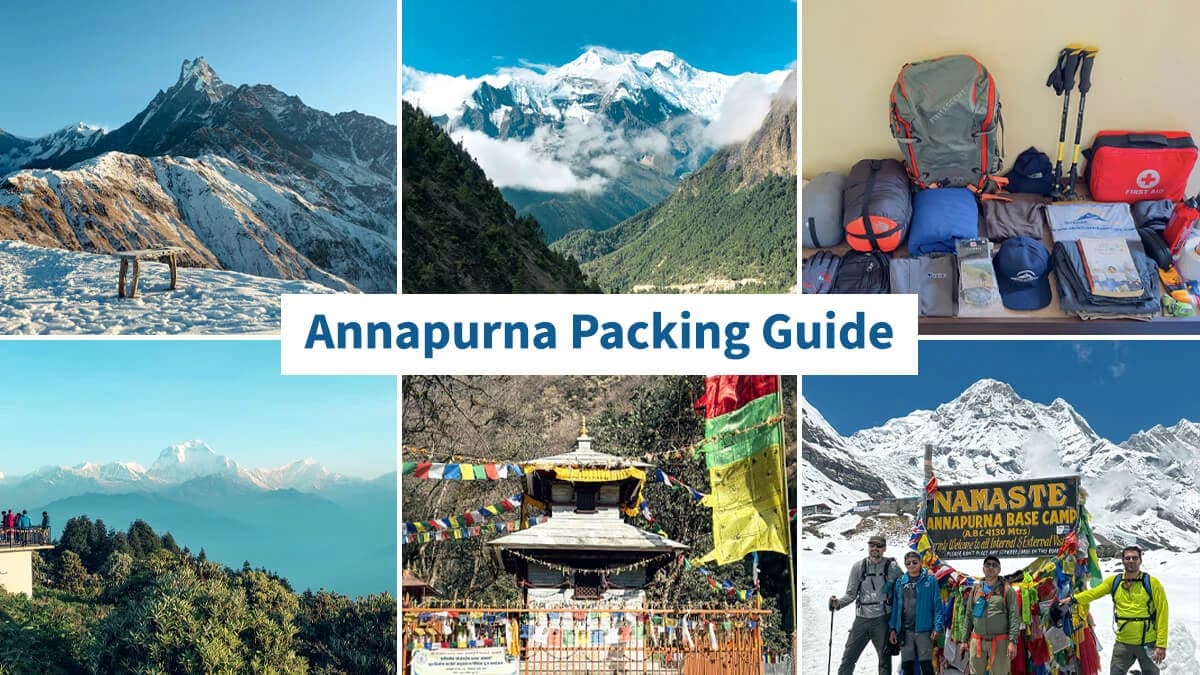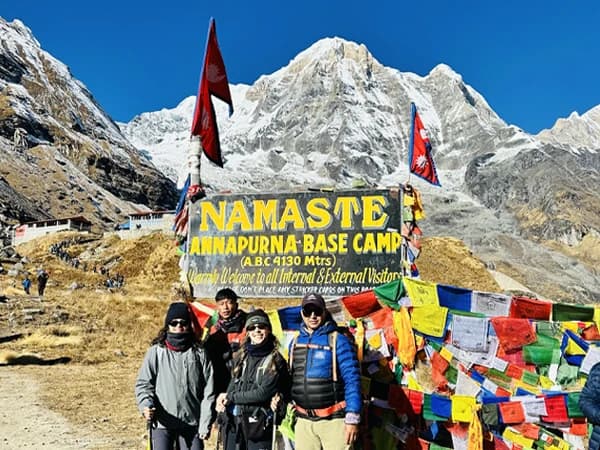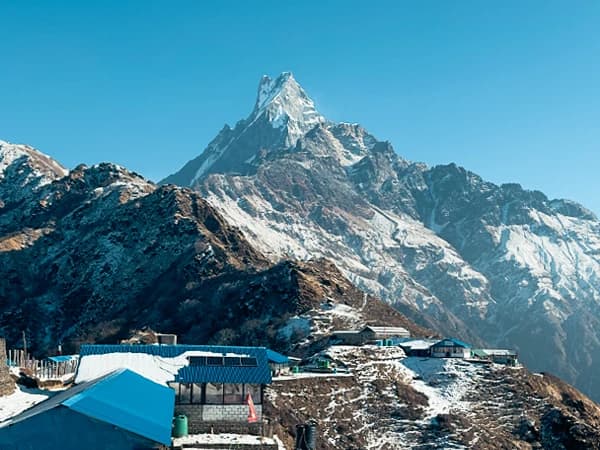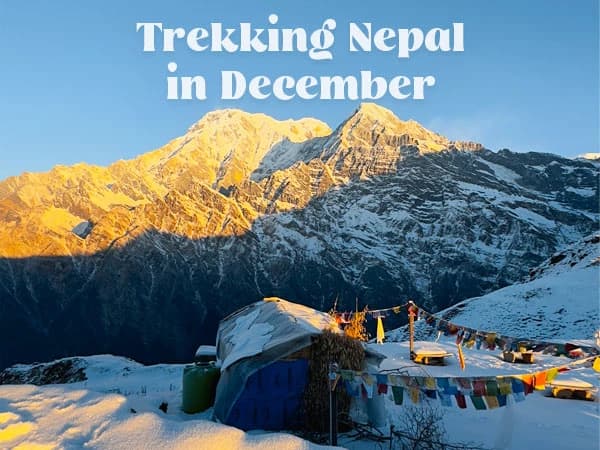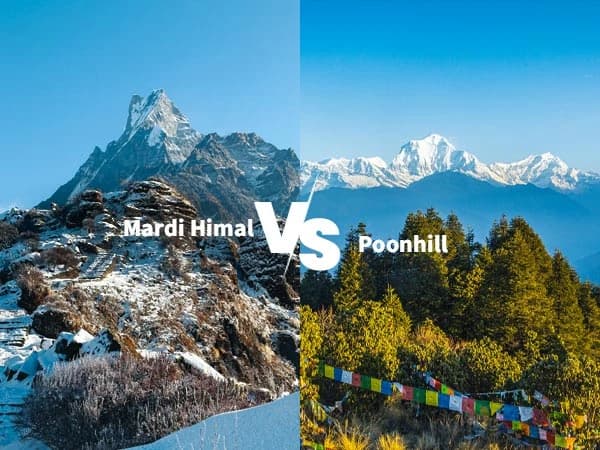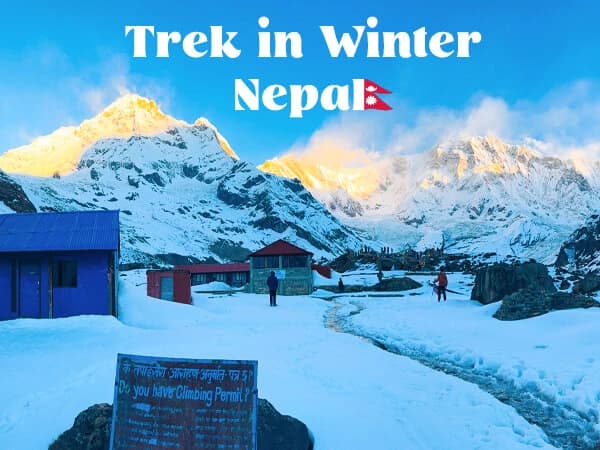Wondering what to pack for your Annapurna trek? This guide covers the ultimate Annapurna trek packing list with expert recommendations for all seasons.
Packing List for Annapurna Treks: Essentials and Tips
Introduction
Packing for an Annapurna trek can be difficult, particularly for first-time trekkers. The wrong equipment can turn a fun trip into an exhausting one. Trekkers who are inexperienced might end up uncomfortable, injured, or even develop serious health issues due to poor weather and high altitude.
The Annapurna region has a lot of different land, ranging from hot forests to cold mountains. The weather turns quickly, so you must dress appropriately. Your backpack must contain sufficient supplies, or it can slow you down or leave you ill-prepared for unexpected cold, rain, or strong wind.
Hiking is unlike traveling in cities as it requires solid and functional equipment. Each piece of equipment in your pack must have a purpose, such as keeping you warm, secure, or hydrated. Too much equipment will hinder you, but too little will make it difficult to deal with the weather. You must strike a balance.
This guide provides a useful Annapurna trek packing list to ensure you have all you need for an excellent trip. Whether you trek during the warm and dry season or brave the cold off-season, we will cover all the gear you should bring, with seasonal advice.

Why Packing Right for Annapurna Trek Matters
Annapurna is a region with various types of weather, high mountains, and challenging trails. The strategy of packing lightly and wisely lets you be comfortable and ready for sudden changes in temperature.
If you wish to undertake the 12-day Annapurna Base Camp Trek, the right equipment is crucial to a successful trek.
Key Locations and Their Packing Needs
-
Nayapul (1,070m)
Most of the treks to Annapurna, such as Annapurna Base Camp and Poon Hill, begin here. Since it is at a low elevation, the climate is hot and humid. It is advisable to dress in light clothing and comfortable trekking pants. A hat and sunglasses shield you from the sun.
-
Ghorepani (2,874m)
It gets colder as you go up to Ghorepani. Even during spring, the mornings and evenings are cold. You will have to put on a warm fleece pullover and windproof jacket. As this place receives heavy rain during the monsoon season, you will require waterproof equipment.
-
Poon Hill (3,210m)
Poon Hill is a popular spot to view the sunrise, but mornings are extremely cold. During winter, the temperature drops below freezing. Thermal leggings, a warm coat, and gloves will keep you warm as you wait for the spectacular sunrise view of the Himalayas.
-
Chhomrong (2,170m)
Chhomrong is a significant stop for trekkers heading to Annapurna Base Camp. It is the final large village with decent shops. It is a good spot to purchase additional snacks, replenish batteries, or change your gear if you need to.
-
Himalaya & Deurali (2,900m - 3,230m)
The farther up you go, the colder it becomes. There is usually snow in winter. One should carry additional clothes, a sleeping bag capable of at least -10°C, and moisture-repellent thermals.
-
Annapurna Base Camp (4,130 meters)
Annapurna Base Camp (ABC) is the highest point on the trek and is ringed by high mountains. It's very cold at night, even in the peak trekking season. You will require a good down jacket, windproof gloves, and a warm hat. You will require protection from UV rays as the sun is higher at higher elevations.

Essential Packing List for Annapurna Trek
Apparel (Layer System)
- Base Layer: Moisture-wicking thermal top and bottom.
- Insulation Layer: A fleece or down jacket warms you.
- Outer Layer: Wind and water-repellent jacket and pants.
- Trekking Attire: Quick-drying shirts and trousers.
- Undergarments: Moisture-wicking and breathable.
- Gloves & Hat: Sun hat for day, warm beanie for cold weather, and insulated gloves for cold.
- Buff/Scarf: Dust and wind protection with a small amount of added warmth.
Footwear
- Trekking Boots: Ankle-supporting, waterproof, and well-broken-in.
- Camp Shoes: Lightweight slip-ons or sandals for evenings.
- Socks: 4-5 pairs of moisture-wicking trekking socks and/or thermal socks for warmth.
Bag and Extras
- Main Backpack (50-65L): Adjustable with rain cover included.
- Daypack (20-30L): For the daily essentials.
- Trekking poles are lightweight and adjustable.
- Rain Poncho/Cover: Protects you from unexpected rain.
Sleep Tools
- Sleeping Bag: Suitable for -10°C to -20°C temperatures (season-dependent).
- Sleeping Bag Liner: It insulates and maintains the cleanliness of the sleeping bag.
Hiking Gear
- Headlamp: Includes additional batteries.
- Water Bottles (2L): Reusable, insulated
- Purifying Water: Filtration system or tablets.
Emergency and Personal Care Supplies
- Biodegradable soap and shampoo.
- Toothpaste and toothbrush.
- SPF 50+ sunscreen and lip balm.
- Hand cleaner and wet wipes.
- Medication Feed & First Aid: Pain relievers or medication for altitude sickness, blister & other ”band-aids”.
Electronics & Miscellaneous
- Power Bank (10,000mAh+)
- Camera & Extra Batteries
- Maps or Trekking Guidebook
- Notebook & Pen
Pro Packing Tips for a Comfortable Trek
It's as crucial to pack the proper items for an Annapurna trek as it is to take the correct route. A quality backpack keeps you comfortable, not exhausted, and prepared for unpredictable weather at high elevations. Too many travelers incorrectly pack too much or the wrong equipment, which complicates climbing and makes it less enjoyable.
The secret to a fantastic hike is to pack light but well—pack only what you absolutely need but be prepared for various types of terrain and weather. Regardless of whether you are highly experienced or a beginner, these useful tips will assist you in packing well and hiking effortlessly.
Pack smart, but not heavy
Hiking for days in high mountains with a heavy backpack can exhaust you quickly. The ideal backpack weight should not exceed 10-12 kg for solo hikers and 5-7 kg for those with a porter. Select clothing that can be used for more than one purpose and carry light, small equipment.
How to pack light
- Use light and quick-drying materials rather than heavy ones.
- Take only what you require—omit additional clothes or items that are identical.
- Save space and store clothes neatly using compression bags.
- If you are hiring a porter, pack only a light daypack (20-30L) with essentials such as water, snacks, a camera, and rain gear.
Break-in Your Gear Before the Trek
New boots and backpacks can lead to blisters, aches, and pain if you have not worn them prior to a hike. Two weeks or more prior to your hike, wear your boots on long walks or short hikes to ensure they are comfortable and well-fitting. Replace the straps on your backpack and add weight to it to acclimate yourself to carrying it.
Checklist for pre-trek gear testing
- Wear hiking shoes on uneven terrain to test pressure points.
- Alter the hip belt and shoulder straps of the backpack to balance the load.
- Use trekking poles to ensure they are the right size and provide adequate support.
Waterproof Everything
Weather in the mountains is unpredictable, and rain or snow may fall suddenly, wetting your equipment if it is not properly covered. Your backpack and necessities should be kept dry for comfort and safety.
Waterproofing tips:
- Put a rain cover over your backpack.
- Seal electronics and clothing in zip-lock bags or dry bags.
- Roll up your sleeping bag in a water-resistant bag.
- Bring a rain poncho to keep you dry.
Preserve the environment
The Annapurna region has fragile ecosystem, and responsible trekking helps preserve it's beauty. Avoid single-use plastic and opt for eco-friendly alternatives instead.
Environmental-friendly packaging practices:
- Use a filtered water bottle and refill it lots of times rather than purchasing plastic bottles repeatedly.
- Use green soap and shampoo in order to clean the water.
- Place your trash, such as food wrappers and used tissues, in a garbage bag.
- Avoid using wet wipes excessively since most of them do not degrade in the environment.
Carry more cash
There are no ATMs past Pokhara, and teahouses don't accept credit cards. You must carry sufficient Nepalese rupees for accommodations, meals, and other expenses such as WiFi, battery charging, and hot showers.
How much money should you carry along?
- Budget $25–$35 per day for meals and accommodations.
- Additional $10 to $15 per day for snacks, hot showers, and battery charging.
- Additional $50 to $100 for emergencies or surprises.
Prepare for altitude sickness
Altitude sickness can happen to even the most experienced hikers. It produces headaches, nausea, dizziness, and shortness of breath. Ascending gradually and staying well-hydrated can minimize the risk.
Altitude sickness prevention tips:
- Drink a minimum of 3–4 liters of water per day to maintain hydration.
- Walk slowly and steadily—too fast a pace can heighten the risk of altitude sickness.
- Consider taking Diamox (acetazolamide) if you previously experienced issues at high altitudes.
- Avoid cigarettes and alcohol since they will worsen breathing and dehydration.
Layering is crucial
Wearing various layers of clothing keeps your body temperature in good condition during weather changes. During the Annapurna season, the day may be warm and nights are extremely cold, so layers must be changed accordingly.
The three-layer system:
- Base Layer: Moisture-wicking thermal clothing to keep you dry.
- Mid Layer: Fleece or a warm down jacket to warm you up.
- Outer Layer: A water- and wind-blocking shell to shield you from rain and wind.
Bring energy-boosting snacks
Trekking is extremely exhausting. You can have lunch at tea houses, but it is simple to carry small snacks that provide you with additional energy.
Best hiking snacks:
- Energy bars and protein bars.
- Trail mix, nuts, or dried fruit.
- Dark chocolate provides instant energy. Instant coffee or electrolyte powder.
Charge your gadgets and carry a power bank
Electricity is difficult to obtain at high elevations, and it can range from $2 to $5 an hour in tea houses. A 10,000mAh power bank can offer a few charges.
Methods to conserve battery life:
- Enable airplane mode on the phone in order to conserve battery.
- Turn off background applications and reduce the screen brightness.
- Carry additional camera batteries if you plan to shoot a lot of photos.
Don’t Forget Sun Protection
The sun may be quite powerful at elevations, even on chilly days. UV light reflects off the snow, increasing the likelihood of sunburn and damaging your eyes.
Simple sun protection items:
- Sunglasses (UV-protected, polarized) to prevent snow blindness.
- Apply sunscreen (SPF 50+) to protect your skin.
- Lip balm with SPF prevents lips from becoming dry. A larger hat or cap provides greater shade.
Final thoughts
Packing wisely for an Annapurna trek makes the journey easy and enjoyable. Wearing layers to keep warm and carrying the right trekking equipment is necessary. A good packing list for the Annapurna trek actually proves helpful.
When preparing, you improve your trekking experience and reduce the risk of being uncomfortable or injured. Each trekker is unique, so alter your list of items to suit what you enjoy and the time of trekking.
Are you undertaking the 12-day Annapurna Base Camp Trek? See our trek package here for expert assistance and easy trekking!
👉 Annapurna Base Camp Trek 12 Days
Get advice on packing from professionals and reserve your Annapurna trek today!



